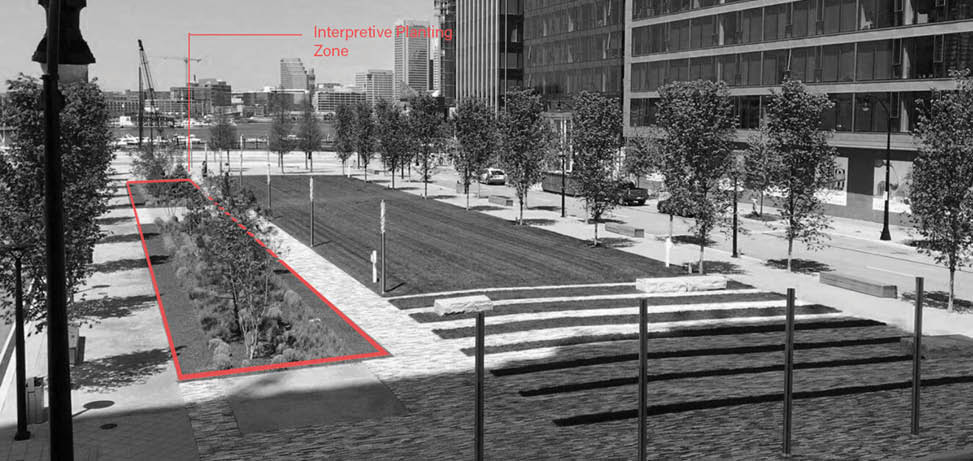Location: Baltimore, MD
Completed: Ongoing
Size: .4 acres
Budget: NA
Services: Landscape Architecture, Planting Design

Changing Conditions
The plantings at central plaza Harbor Point have always been a contributing element to the interpretive story telling of the district’s landscape master plan. The plantings were also always envisioned to be a component of the design that might adapt over time as solar exposure shifted as a result of tree canopy growth and the further development of the parcels adjacent to the plaza. In 2011, when studio founder Richard Jones crafted the original concept, the design was meant to interpret the landscape of the Serpentine Grasslands , a region found north of the city and one where the chromium ore that fed the industrial engine that was Baltimore Chrome Works was discovered. Today, the focus of that planting will shift to incorporate species which are edible and whose utility includes medicinal qualities; traits set in a story much older than just Baltimore. Tradition rooted in the lives of the first people to walk the continent.


The site conditions have changed considerably over the years as trees have matured and new buildings have come online.

Looking back, moving forward.
The upland tree plantings that march along the 300ft long planter will remain, continuing the telling of the site’s industrial story. The understory has been reinvisioned to incorporate species such as chokeberry, geranium, echinacea and viburnum, all of which have been valued over the millenia by the native peoples of America for the sustenance, utility and the medicinal qualities they provide.
The combination of plants are intended to be as beautiful in their combination as they are useful, and to create a place where one may kindle a new appreciation for our environment – one rooted in the very connection between human beings and our earth.
The expanded narrative moves the interpretive threads of the overall Harbor Point landscape master plan from a simple statement on sustanability and site history to one who’s aspiration is in part, to contribute to a societal shift toward an enlightened awareness of the importance of our natural environment.
This shift is one which iO Studio and its partner’s hope to continue to evolve across the Harbor Point district, positioning the development as a future resource for the incorporation of ‘enhanced’ landscape strategies within the urban landscape masterplan.




Mountain Laurel:
The leaves are analgesic, astringent, disinfectant, narcotic, salve and sedative. An infusion of the leaves is used as a disinfectant wash and liniment to treat pain, scratches, rheumatism, inflammations and to get rid of body parasites.
Chokeberry.
The fruits of Aronia melanocarpa (Aronia berries) have been found to show multiple bioactivities potentially beneficial to human health, including antidiabetic, anti-infective, antineoplastic, antiobesity, and antioxidant activities, as well as heart-, liver-, and neuroprotective effects.
Echinacea.
In Native American culture, the purple coneflower was used to treat poisonous bites and stings, toothaches, reduce inflammation, sore throat, colds, and so much more. In a way, this botanical miracle was used as a cure-all and was used to treat ailments more than any other medicinal plant.
Sumac
Tanins valuable either alone or in combination with other elements to create dyes.
Geranium
Used traditionally for medicinal purposes, including for relief from a sore mouth, as a laxative, as an antiseptic, and as an emetic
Monarda
The leaves soothe stomach aches when used internally, treat wounds externally, and ease headaches when used as a poultice.




